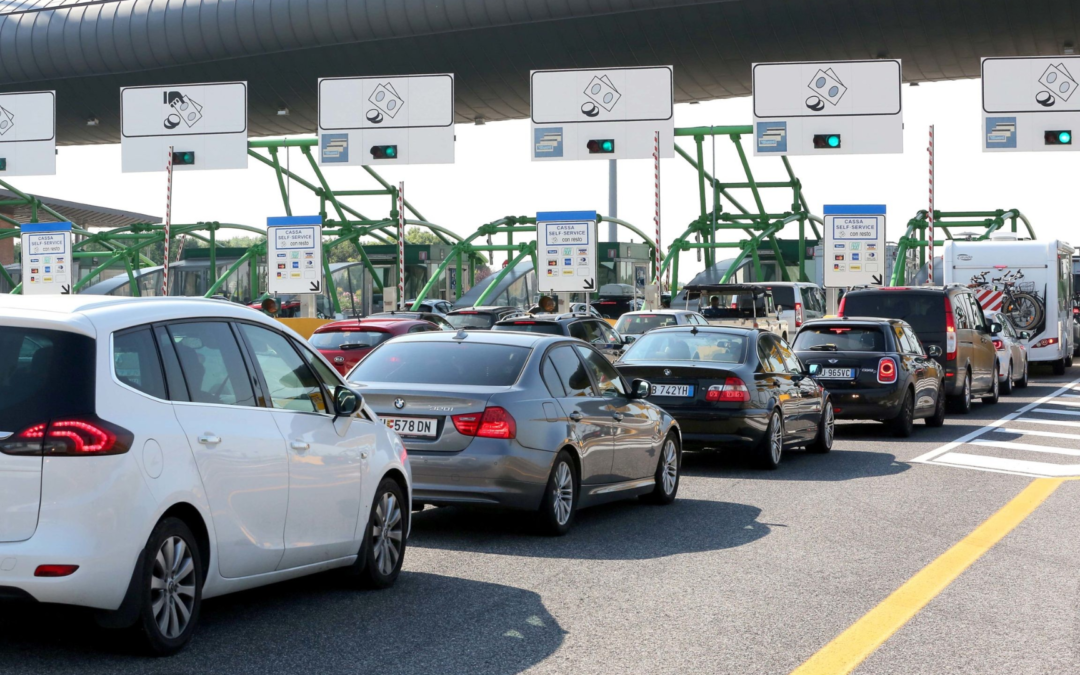The text of the traffic reform, featuring 700 amendments presented to the Transport Commission, will commence the parliamentary process on March 1st. What changes await drivers and motorcyclists? Here are five things you need to know.
1. Speeding Fines and Speed Cameras: Safety Over Revenue
Ensuring road safety, not generating income, has always been Minister Salvini’s mantra. In the traffic regulation reform, a new addition to Article 142 is introduced in Section 6(ter): “In cases of multiple violations (…) committed by the same vehicle on road sections under the jurisdiction of the same authority,” administrative sanctions are applied within one hour for the most serious offense, increased by one-third if they are more favorable. The period mentioned in the first sentence begins from the moment of the first confirmed violation. Additionally, there is an obligation to conduct periodic checks on the functionality and calibration of electronic eyes, as required by the 2015 Constitutional Court ruling No. 113, which has won numerous appeals.
2. Barkavelox
The municipality of Venice has requested special intervention to make sanctions effective for boats and vessels exceeding the speed limit. The device is pending approval. High speed is not just a safety concern for the world’s unique city; it also jeopardizes a very fragile ecosystem. The new traffic rules allow, on an experimental basis, the use of “navigation equipment for speed determination upon request to the Ministry of Infrastructure and Transport, accompanied by technical opinions and certificates,” until the approval or homologation process is completed.
3. 125cc Motorcycles on Highways and Ring Roads
Adult riders on 125cc motorcycles will now be allowed to travel on highways and ring roads, which were previously reserved only for the 150cc category, as required by Article 175(2) of the Road Rules. Trade associations view this rule as an anomaly compared to other European countries.
4. Animal Abandonment: Strict Measures
The reform introduces a suspension of driving privileges for a period of six months to one year for those who abandon animals on roads or in structures. The offense will also include the same penalties as vehicular homicide and serious or very serious bodily harm if animal abandonment leads to fatal accidents or injuries.
5. Alcohol Interlock Device
Those facing issues due to driving under the influence will be required to install an alcohol interlock device at their own expense. The device prevents the car from starting if the driver’s blood alcohol level exceeds zero. The specifications of the interlocking device and installation methods will be determined within six months from the date the provision comes into force. The amendment also specifies that the alcohol interlock must be equipped with a seal, preventing tampering or unauthorized interference after installation.
These changes not only aim to ensure the safety of road users but also underscore the importance of environmental respect and animal welfare. The new rules control speed both on land and water, striking a balance between mobility and safety in the modern world
Italian Court Decides: Ban on Mobile Phones in Traffic Jams
In recent times, road safety issues have become increasingly prominent, prompting governments worldwide to tighten rules and penalties to ensure the safety of all road users. Recently, the Italian Court of Cassation issued a decision that addresses the use of mobile phones in traffic jams.
According to the latest ruling from the Court of Cassation in Italy, using a mobile phone while driving in a traffic jam is considered a violation. This decision brings clarity and clarification to the rules regarding the use of mobile devices behind the wheel, even in situations where a driver finds themselves in a traffic standstill.
Essentially, the court stated that even if a driver is stuck in a traffic jam or gridlock, the use of a mobile phone is deemed a violation. This ruling put an end to any potential ambiguous interpretations related to Article 173 of the Road Code concerning the use of mobile devices while driving.
The court took a firm stance, stating that the use of a mobile phone is only permitted when the vehicle is stationary on the road for a sufficiently long period, allowing the driver to use the device without hindrance to the resumption of movement.
This development in traffic regulations underscores a serious approach to the issue of driver distraction on the road. Drivers now need to be more vigilant and cautious, even when stuck in traffic, to avoid fines and potential legal consequences.
Penalties for using a mobile phone while driving can be applied not only to those actively moving on the road but also to those who have come to a halt at a red light or in other situations where the vehicle remains stationary for an extended period.
This decision by the Italian court sends a clear message about the importance of maintaining road safety and emphasizes that even brief stops require attention and responsible behavior from drivers
Italian Court Overturns Speeding Fine: Invisible Camera Grants Drivers a Second Chance
In a recent precedent, an Italian court in Guardia Sanframondi (Benevento) ruled in favor of a transportation company, nullifying a speeding fine. The uniqueness of the situation lies not in the driver denying guilt, but in the insufficient visibility of the road control camera.
The judicial decision has disrupted norms in the field of traffic law enforcement, emphasizing the importance of clear and accessible installation of speed control systems on roadways. The judge who made the decision highlighted that if a camera is hidden or placed in an inaccessible location, the fine for speeding loses its legal validity.
The court’s support found grounding in legislation, according to which, starting from 2007, the visualization of control points to determine speed limits became mandatory. According to Article 142 CdS, paragraph 6a, such points must be clearly visible and marked by signs or traffic lights.
A fresh perspective on law enforcement has drawn attention to the issue of the placement of speed control cameras. It is crucial that they not only comply with laws but also ensure visibility for drivers. The judicial decision has become an accent on the need for the prior visualization of all speed control devices, emphasizing that any type of inspection must be clearly visible to drivers.
This precedent establishes an important legal standard, urging speed control authorities to more carefully select locations for camera installation. Drivers can now expect courts to scrutinize not only their behavior on the road but also the conditions under which traffic violation cameras operate
SUBSCRIBE
TRANSFER IN ITALY
Malpensa Airport – Milan – from € 90.-
Como – Milan – from € 90.-
Bergamo – Milan – from € 90.-
Lugano – Milan – from € 140.-
Fiumicino Airport – Rome – from € 70.-
Ciampino Airport – Rome – from € 70.-
Civitavecchia – Rome – from € 150.-
Milan – Rome – from € 900.-














